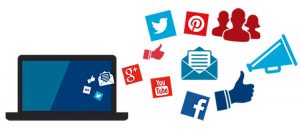 © stryjek – Fotolia.com
© stryjek – Fotolia.com
When I read this post about how to streamline decision making in your life, I immediately considered how the same principles apply to business blogging.
The idea behind decision fatigue is that we consciously and unconsciously make countless decisions in our daily lives, including what to eat, what to wear, and how we spend our time.
If we can automate more of these decisions, the theory goes, we can re-apply that time and energy to the activities that will most nourish us and advance our work in the world.
Just like the post’s author Anne Bogel, I aim for and recommend a daily blog writing habit. Yet I still sometimes let myself off the hook – maybe you can relate?
One of Bogel’s tips is to create if-then rules for yourself. Instead of just saying you’ll do something (e.g., “I will write a blog post today”), if-then planning identifies a specific event that will trigger each of your intended actions.
Here are four decisions we may face during the blogging process and how we can use the if-then method to reduce decision fatigue:
What should I blog about?
“If it’s the week of May 10th then I’m blogging about ___, and if I’m blogging about ___ then I’m exploring these ideas: ___.”
In order to have such clarity about your blogging topics and schedule, you need to have a blogging plan and editorial calendar. It also really helps to have an outline for each post. A topic or title aren’t always enough when you come back weeks later and try to write the post.
Is this good enough to publish?
“If I’m finished my draft, then I take it through an editing process.”
In a recent post about her daily writing tools, Ann Handley explains why an editor is crucial: “I think of a good editor as the best advocate for the reader, which is why companies that don’t use editors end up hurting themselves.”
Before turning over her draft to someone else, she checks them with Grammarly and Hemingway. My own self-editing tool is text-to-speech software that helps my ears catch what my eyes miss.
What do I do next?
“If I’m finished my final post, then I do ___, ___, ___, etc. until I’ve completed my list.”
I tend to forget new skills or processes pretty quickly if I don’t have repeated opportunities to practice them. As my volume of monthly blogging clients grew, I would check and re-check whether I had remembered all the steps for publishing and promoting, and then still second guess myself.
The answer for me was to create a blog post publishing and promotion checklist to stay consistent with all the steps in the process.
Should I stop writing or keep writing?
Keep writing, of course!
At Forbes, Stephen J. Meyer describes creating an if-then scenario for when he wants to talk himself out of following through with his exercise goal. “If I get to the point where I want to quit,” he writes, “then I will focus intently on my audiobook and tune out the pain and fatigue I’m feeling.”
“If I want to quit working on my blog post, then I will check my Pomodoro timer and commit to writing until the next break. If I’m still struggling, then I will pause and consciously think about my audience and how this post could help them. If I still want to quit, then I will take an earlier Pomodoro break and play a song from my “Happy” iTunes playlist (dancing around the living room is highly recommended).”
Is decision fatigue sabotaging your blog writing efforts? What trigger events could get you back on track with your business blogging?
(221)






